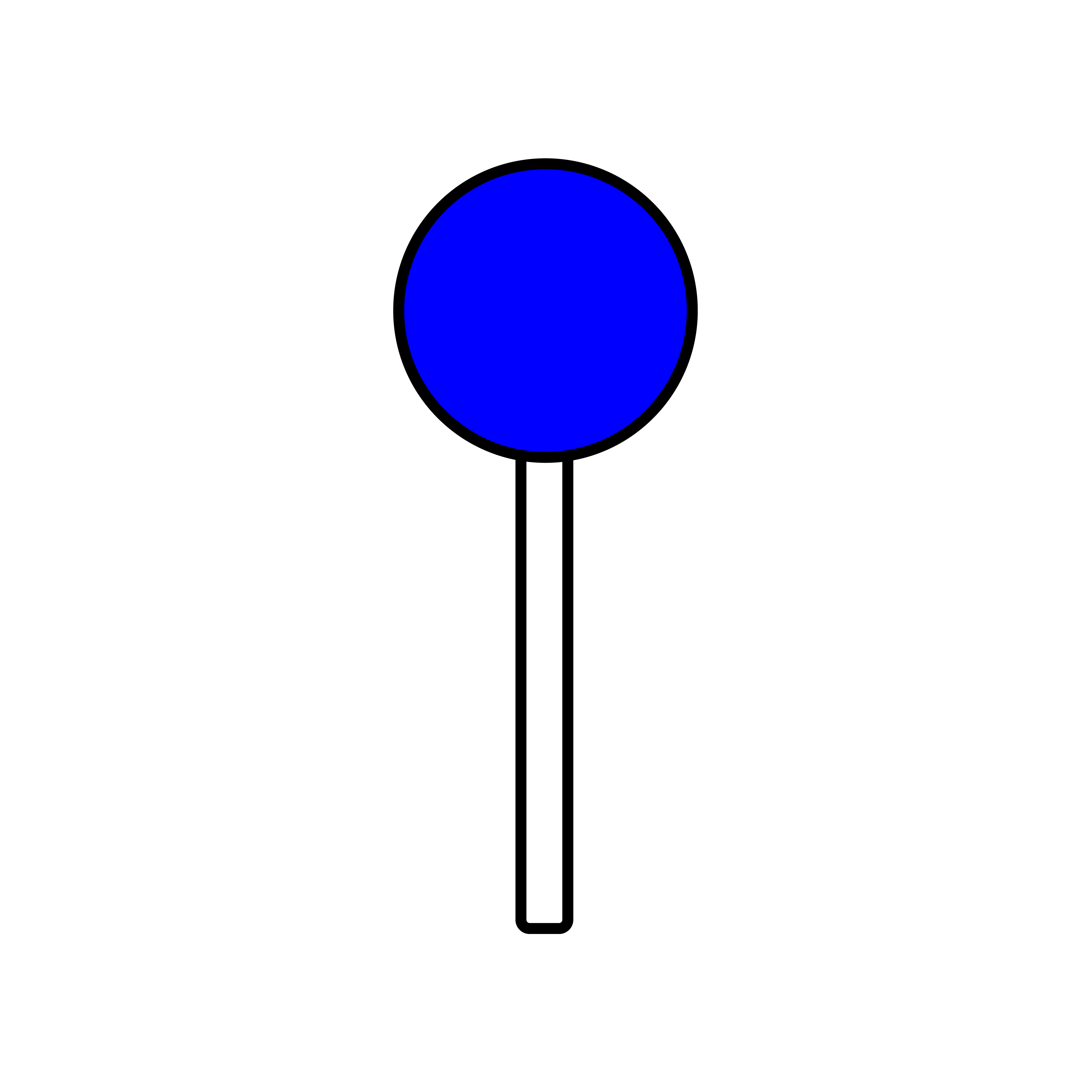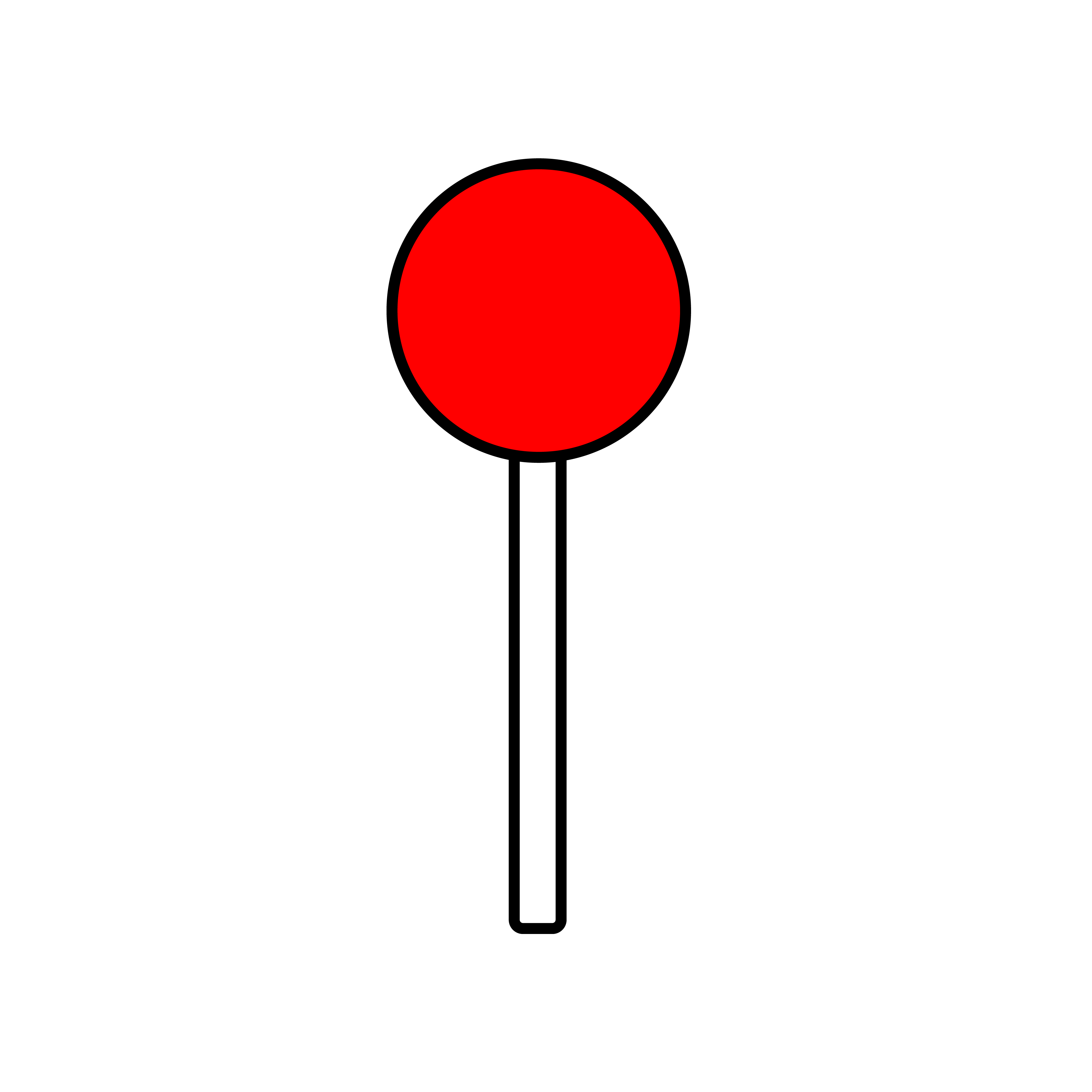
Macro-Economy
South Africa
South Africa’s economy is reliant on technological and industrial logics that extract natural resources for sale on the global market. Using gold as a starting point, the network of infrastructures, auxiliary industries, and services that have formed to support gold extraction are studied. Gold - and other mineral - exportation is dominated by multinational corporations who together form the “Minerals Council of South Africa '' that sell to foreign nations and to the South African Gold reserves which stores gold in foreign bank reserves. Gold is increasingly difficult to mine in South Africa despite rising global prices, but it remains culturally important as the foundation of the national export-driven economic model.
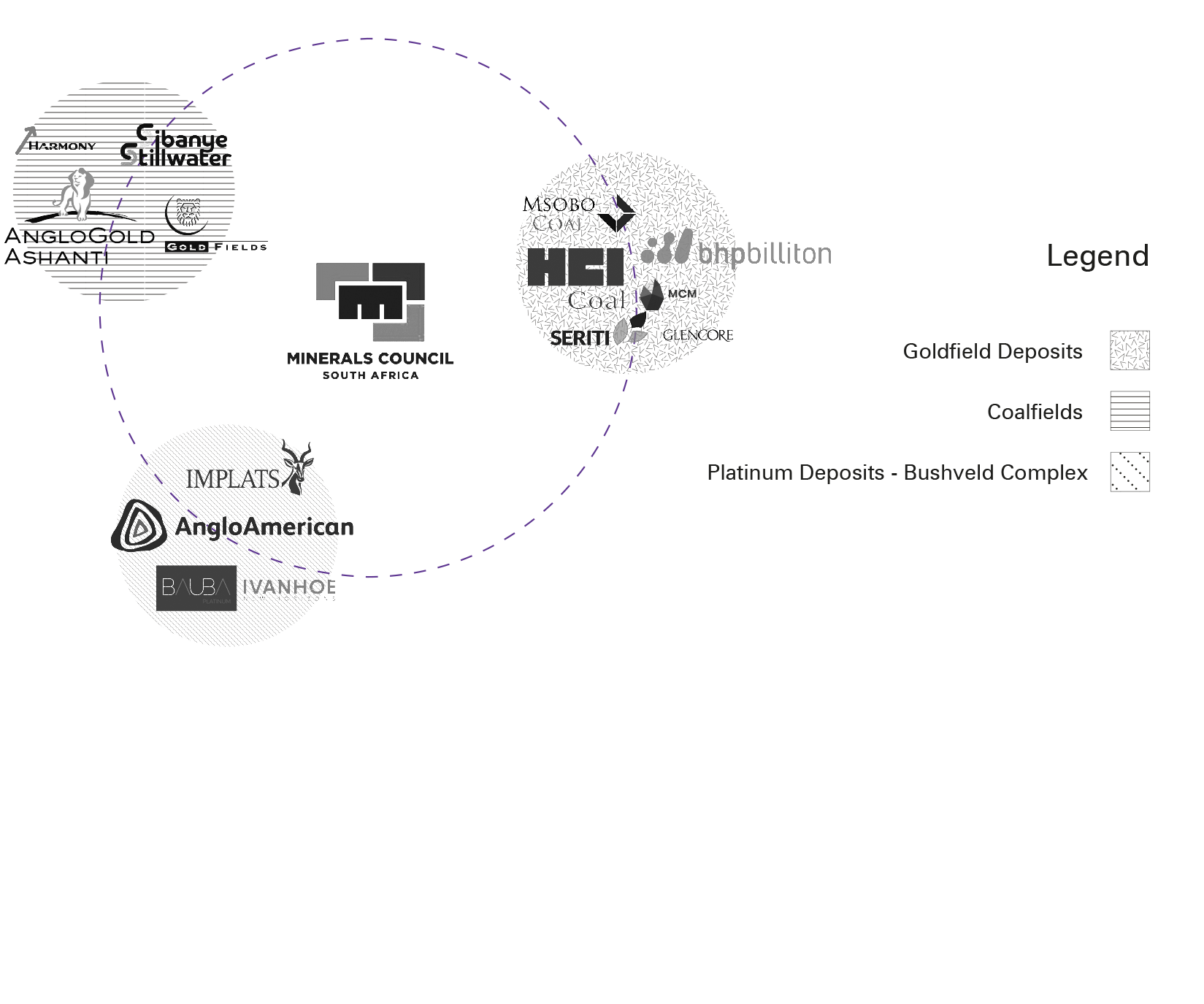

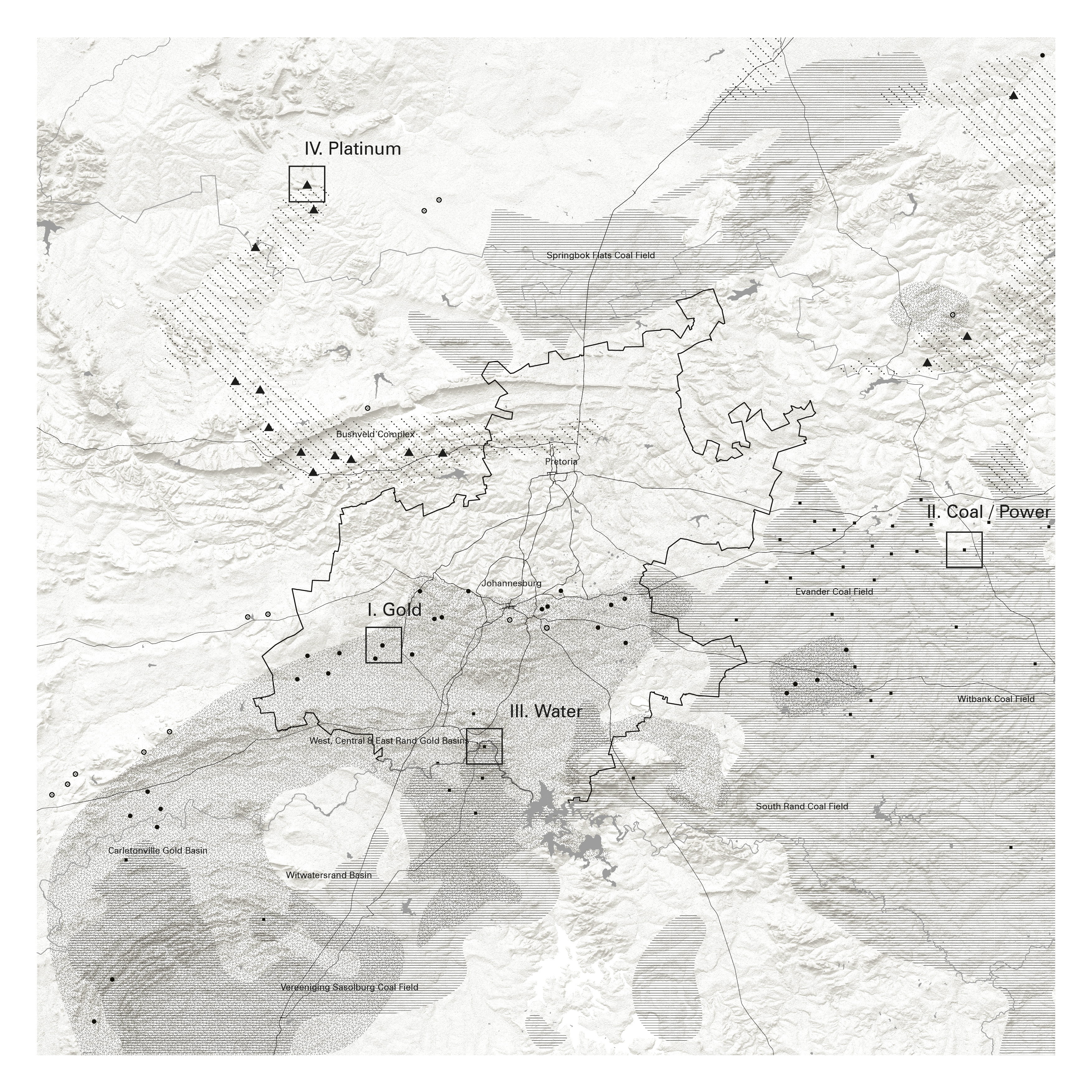
Totems
Gauteng
Four case studies are examined at the Gauteng network scale to uncover its logistical rationale and studied at the landscape, building, and machinery scale. Each case study is mutually dependent with one another and with the geological underlayer below-ground.
I Gold
II Coal / Power
III Water
IV Platinum
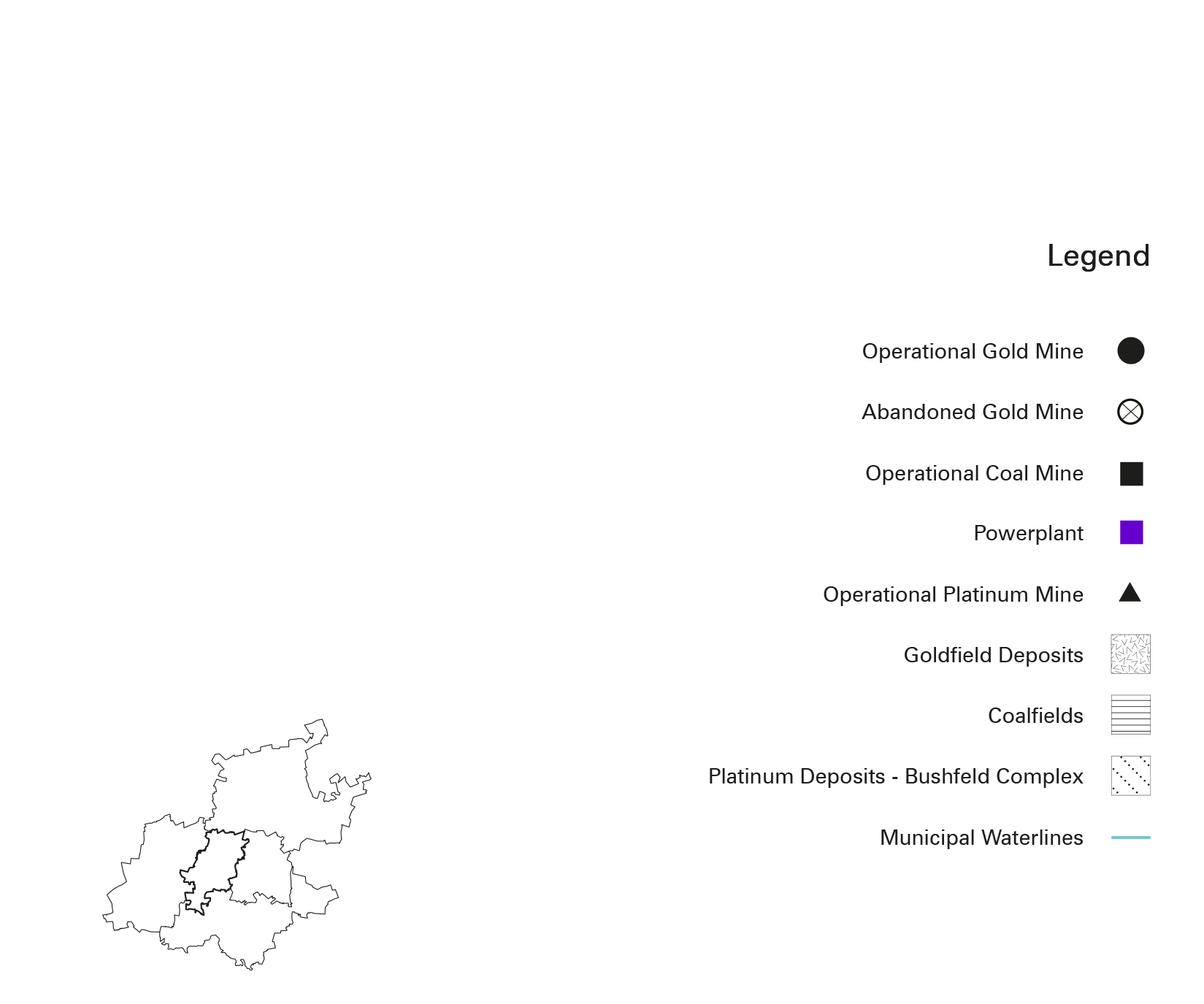

Four Materials
